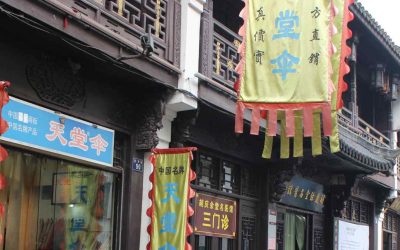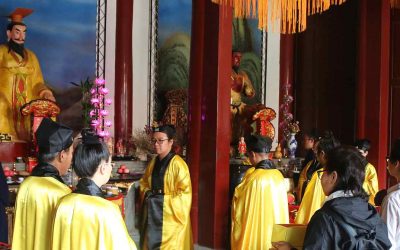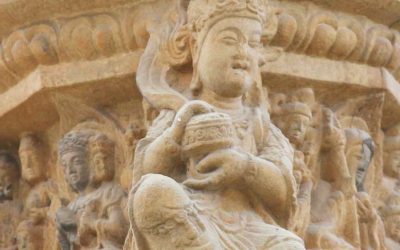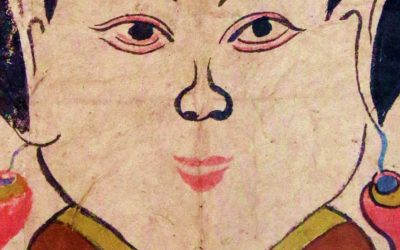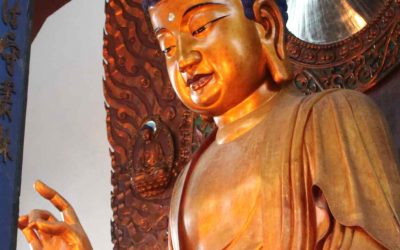The Lost Mythology of Ancient China
Reconstructing the mythology of ancient China is a painstaking task that tries to characterize some legendary figures and situations based only on the few sentences about them found in later works by philosophers and historians. The Classic of Mountains and Seas (Shanhaijing) helps to fill in some gaps, but its cryptic descriptions make it useful mainly for a small number of specialists.
A Lost Book
Much more useful is the Shiben, often translated as the Book of Origins, an ancient Chinese historical and genealogical text dating back approximately to the Warring States period (5th–3rd centuries BCE). The only problem is that the last known copy was lost during the Song dynasty, around 1,000 years ago. What would have been an irreparable loss in another culture has been partially recovered, thanks to China’s scholarly tradition. Over the past centuries, several scholars have attempted to reconstruct it based on references made in other texts that quote or cite it.
Contents of the Shiben
The Shiben is essential for understanding early Chinese history and especially how the ancient Chinese viewed their mythical and cultural origins — including royal genealogies, the beginnings of institutions, and legendary inventions. Among its main sections were the genealogies of kings and royal families, the origins of important feudal states and geographical places, and chronological lists of rulers with approximate dates or time periods.
It integrated legends and events that may have occurred in the distant past into a coherent narrative about the development of Chinese civilization. These reconstructions make the Shiben a key source for studying the historical and mythological worldview of ancient China.
Inventions from the Dawn of China
One of its most fascinating sections deals with the origins of professions, inventions, and techniques, attributing various aspects of cultural progress to their respective mythical inventors. Regardless of whether these claims hold historical accuracy, they are essential knowledge for anyone approaching Chinese culture. For example:
– Cang Jie, a minister of the Yellow Emperor, created Chinese characters by observing the tracks left by birds and animals. Legend says that when he finished, wheat rained down from the sky and spirits wept, because knowledge had entered the world — bringing both power and danger.
– Meng Tian, ignoring chronological consistency, was a general of the Qin dynasty who is credited with perfecting the Chinese brush and the use of ink made from vegetable carbon.
– Shen Nong, or the «Divine Farmer», taught humanity to cultivate grains, use plows, and identify medicinal plants. He is considered the father of agriculture and traditional Chinese medicine.
– Shaohao was the one who began domesticating animals for fieldwork and human service.
– You Chao Shi, meaning “He of the Nest”, had the idea of building elevated houses to protect people from wild animals and natural elements — a crucial step toward a sedentary lifestyle.
– Leizu, wife of the Yellow Emperor, is credited with discovering sericulture after observing silkworms making cocoons on mulberry leaves.
– Fu Xi, among other inventions, is attributed with creating fishing nets and the system of trigrams that later evolved into the I Ching (Yijing).
– Ling Lun, a musician of the Yellow Emperor, is said to have created the first Chinese musical scales based on bird songs.
– Gao Yao, a justice minister under Emperors Yao and Shun, laid the foundations of Chinese penal law and used a mythical unicorn (xiezhi) to detect lies and resolve disputes.
– Xi Zhong is credited with inventing wheeled carts — a major improvement in land transportation.
About me: I have spent 30 years in China, much of the time traveling and studying this country’s culture. My most popular research focuses on Chinese characters (Chinese Characters: An Easy Learning Method Based on Their Etymology and Evolution), Matriarchy in China (there is a book with this title), and minority cultures (The Naxi of Southwest China). In my travels, I have specialized in Yunnan, Tibet, the Silk Road, and other lesser-known places. Feel free to write to me if you’re planning a trip to China. The agency I collaborate with offers excellent service at an unbeatable price. You’ll find my email below.
Last posts
Violence and cannibalism in the Five Dynasties
l l Violence and cannibalism in the Five Dynasties When one begins to know the history of China, one concentrates its readings on its brilliant moments, on those great dynasties that expanded the territory, recreated surprising cultural forms and became the greatest...
DRAMATIC ART IN CHINA AT THE END OF THE DYNASTIC REGIME
oyaaDuring a break in my studies, the afternoon of Christmas Eve I was looking through a cabinet in which I have some somewhat old books bought on various occasions at flea markets in Beijing and Shanghai. After running into Lewis Morgan's "Ancient Society" and taking...
The value of the Taotejing, the sacred book of the Taoists
In Peter Goullart The Monastery of the Jade Mountain. Unlike the Bible and the Koran. the Taoteking does not refer to the historical processes which led men, or rather a particular tribe among men, to the idea of One God. Neither does it describe in detail how this...
The path to Nirvana in the Kunming Dharani Pillar
The path to Nirvana in the Kunming Dharani Pillar The main courtyard of the Kunming Municipal Museum houses one of the most original art-works from the time of the Dali Kingdom (937-1253 CE) in Yunnan. It is called the Dharani Pillar of the Dizang Temple. It is a...
Legends of the Mother Goddess: Intro
From Leyendas de la Diosa Madre. Pedro Ceinos Arcones. Miraguano, 2007. Anyone who approaches the literature of the minorities of Southern China will discover numerous works where the leading role is played by a female goddess or deity. Whether dedicated to the...
Buddha as a true man: a different tale
In the fourth chapter of India in the Chinese Imagination: Myth, Religion, and Thought (edited by John Kieschnick and Meir Shahar, University of Pennsylvania Press, 2014), Nobuyoshi Yamabe contributes an article (Indian Myth Transformed in a Chinese Apocryphal Text:...





